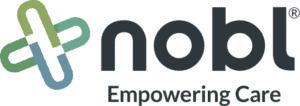How High Performing Organizations are Leader Rounding: A Benchmarking Study

Every patient, every day is the best practice for leadership rounding on patients but it’s not always realistic. With nursing shortages and hospital leadership positions open, how do you know what the right amount of rounds is for your organization to move the needle on patient satisfaction? Listen as Katie Haifley, CPXP, co-founder and COO of Nobl, walks through a 3-year analysis trying to answer this very question; how often do the leading organizations round?
PX Marketplace webinars are complimentary.
Brought to you by:

Related content
-
 Culture & Leadership
Culture & LeadershipPX Champions: Improving our Impact by Broadening our Reach
How can we ingrain patient experience into our organization’s culture? This is the question our team pondered as we developed the 2024 strategy for our medical group. At that time, patient experience (PX) was something teams focused on, but mostly when scores were low. It was our goal for PX to be a foundation from
Learn more -
 Staff & Provider Engagement
Staff & Provider EngagementBeyond the White Coat: Mental Health in the Life of a Junior Doctor
This article underscores the profound need for a culture that prioritises mental health, especially among doctors navigating their early careers. This personal narrative also highlights the importance of overcoming this and the challenges one can face while trying to do so. A journey of a 30-year-old doctor, as she hurdled along life with the passing
Learn more -
 Patient Family & Community Engagement | Quality & Clinical Excellence | Staff & Provider Engagement
Patient Family & Community Engagement | Quality & Clinical Excellence | Staff & Provider EngagementCompassion Rounds: Connecting with Patients and Families Beyond a Diagnosis
During a hospitalization, medical rounds address the patient’s physical needs but often fall short of addressing emotional and spiritual needs. Compassion rounds is an innovative program that focuses on a patient’s mind, body and spirit. It assists families in finding hope, strength, and peace. The goal is to empower patients and families to learn new
Learn more
